There’s something about the ethereal space under a blossoming cherry tree. Like many of the joys of gardening, it’s a feeling that lasts only for a few days a year and then is gone. But there is a way to capture some of the beauty and power that come and go with the earliest cherry blossoms and the last golden leaves of autumn: photography. It will help you preserve the beauty that you love—and share it with your friends—and give you new ways of seeing, and loving, your garden.
With a basic understanding of the fundamentals of photography, you can take stunning photographs of your garden. Keep in mind that garden photography isn’t all about gardens; it’s about light. The word “photography” means writing with light, and finding the best light to show off your garden is the key to making beautiful pictures.
See what the camera sees
The most important thing to remember is to look carefully through the viewfinder before you shoot. Learn to see what the camera sees. Don’t just see what you want to see; look at what’s really there. Instead of focusing on the part of the picture you like, consciously look for anything that you wouldn’t want to be in the scene. Are there telephone wires in the top of the frame? Do the elements of the picture collide in confusing ways? (Tree branches growing out of a person’s head in a careless portrait is a classic example.)
Many of these composition problems are easy to fix. Stepping a few inches to the left or right, tilting the camera up or down, or lowering your point of view closer to the ground can eliminate unwanted elements. Once you’ve made adjustments, examine the frame again, from edge to edge and corner to corner. You can crop distracting details out of the print later, but you should rely on cropping only as a last resort.
Digital cameras provide instant feedback, which can help you capture just the photo you want. Instead of waiting for the pictures to come back from the lab, you can see them full-size as soon as you upload them to your computer. Even professional photographers who still prefer film for their final product often rely on digital cameras to preview their images.
If you find it hard to resist shooting on the run, put your camera on a tripod. Besides steadying the camera for long exposures, a tripod will force you to compose more carefully and make it easier to examine the frame thoughtfully before you shoot.
Obviously, taking pictures isn’t just a question of getting rid of unwanted details. By carefully arranging the elements in a picture, you can make sure people see exactly what you want them to see. The eye tends to follow converging lines, and it is drawn to the brightest colors and lightest elements in a photo. A small spot of light on a flower in the shade of a tree will draw attention to the flower; a bright red watering can in the background or a little flash of bright sky in the corner of the image will draw the eye away.
What you see is what you get
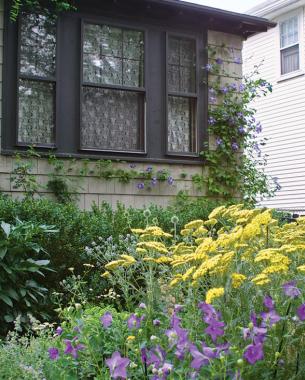
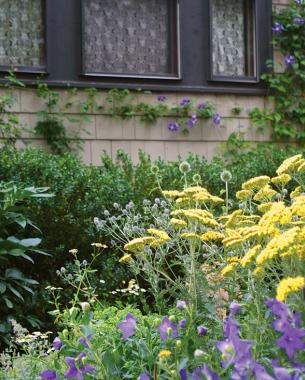
The bright patch of sky and the white house (left photo) distract the eye. By narrowing in tightly, the distractions are eliminated, making the garden the star of the show.
Bright light is not the best light
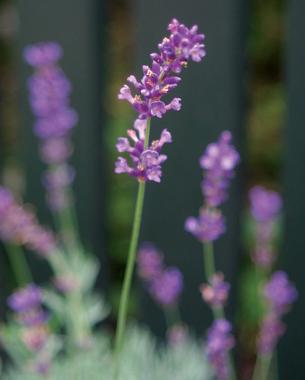
A bright, sunny garden is one of the trickiest places to take pictures. Your eyes can see a much greater range from bright to dark than film or digital images can capture without losing something in the brightest highlights or the darkest shadows. That’s why photos taken at noon on a sunny day leave intense colors looking washed out and shadows looking dark and murky. Instead, shoot on an overcast day, when clouds do a good job of diffusing light. Direct sunlight also creates pictures with harsh contrasts. In the morning and evening, the light looks longer, and it seems to caress whatever it touches.
Another key to making great pictures is understanding how your camera works. It really does pay to read the manual. The simple point-and-shoot camera that I sometimes use has dozens of focus and exposure modes that let me use different combinations of ambient (or natural) light and flash. For example, if I can’t keep myself from shooting on a sunny day, the “fill flash” mode fires the flash to fill in just enough of the shadows to keep them from going black in the photo. Sometimes I think that little camera is smarter than me, but it wouldn’t be able to do its tricks without me pushing the buttons in the right order.
Lighting can help accentuate the best elements of your subject. Angled light will bring out the details of texture in blossoms and foliage. A single flower in the light, seen against a dark background, pops off the page. One trick is to emulate the photography that you see in old Hollywood movies. Often the leading man (read: a rugged cactus) would be lit with bold shadows, while the leading lady (a single rose) would be lit with soft, gentle light. Another tip from the golden age of Hollywood: Black-and-white pictures have a timeless elegance. Shoot a roll of Kodak’s Portra 400 BW or Ilford’s XP2 film and see for yourself.
Avoid harsh light
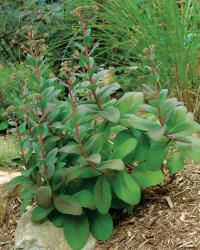
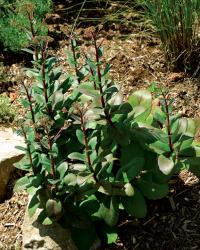
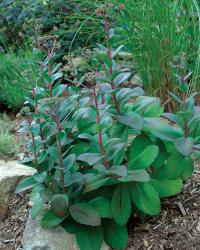
Bright sunlight (center) often results in overly bright light colors and deep shadows, giving a photo harsh contrasts. Diffused light, such as that found on an overcast day, softens the shadows and lets true colors shine through. Morning light (left) and evening light (right) are long and gentle, which helps fill in shadows.
Capture the essence of your garden
There are two types of garden photographs. The first gives an overall feeling of the garden and captures a sense of space. The eyes should be able to wander through the photograph like a visitor wandering into your garden. Use the design and function of your garden, and its shapes and lines, to guide your composition. Paths draw the eye in, dark branches envelop and frame a subject, and stems and leaves point toward the flowers at the heart of the image.
Fill the frame with elements that are essential to the picture. It’s better to have your garden bursting out of the image than to leave a few interesting things stranded in the middle of a sparse frame. If your garden is small, step right up. If your garden is too big to fit in one shot from the farthest place you can stand, stitch together a panorama from a series of pictures.
Try different perspectives
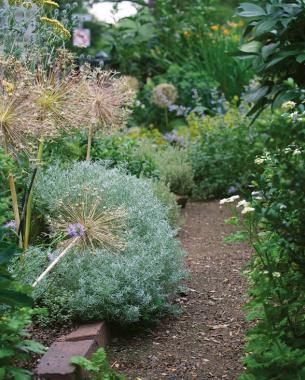
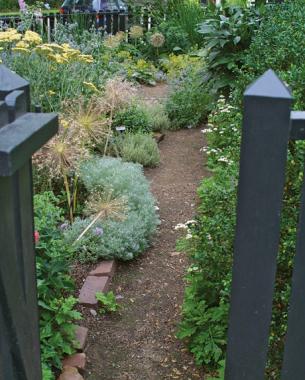
Shoot the same subject from different angles; the results may surprise you. In the inset photo, there are too many distracting elements for the eye. By lowering the viewpoint and zooming in, the focus is narrowed and the distractions are eliminated.
Find beauty in the details
The second kind of garden photo is more like a portrait than a landscape. Single out your best specimens and give them the attention they deserve. Think about what it is you love about your subject, and find ways to emphasize that. If you have a single, perfect blossom, try to fill the entire frame with it. Small flowers like those of witch hazel can be tricky to photograph individually, so try to photograph a branch of them together. Isolate the color of the flowers against a dark backdrop or against the blue sky, or let the background fall out of focus. Look for little grace notes—intricate shadows falling on the subject from nearby plants, reflections in a pool of water, translucent leaves aglow with the sun behind them—that will make the portrait special.
Don’t center the subject
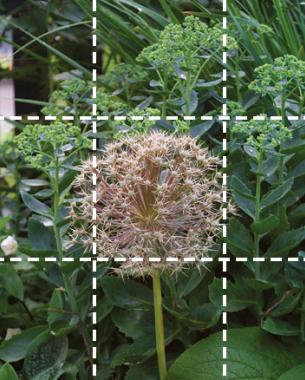
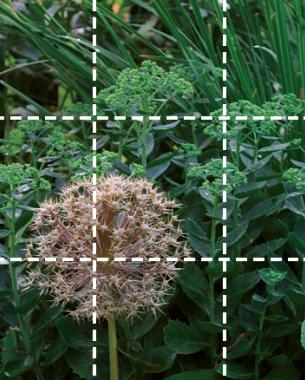
Perfectly centered subjects make for static, uninteresting images (left). Divide the frame into thirds—imagine a tic-tac-toe grid—and place your subject on a crossline (right).
Look like a genius
Great professional photographers share only their best photos. When you get your photos back from the developer or uploaded to your computer, examine them as if you don’t remember why you took them, and evaluate each image. Is the focus sharp? Are the colors rich? Does the frame feel dynamic? Does the eye go to the heart of the photo, or does it wander off the edge? Throw away or delete any photos that have flaws.
Exploring a garden with your eyes attuned to photographic possibilities won’t only give you better pictures. It will give you a more intimate understanding of beauty—by design and by happy accident—in the garden.
Which film speed or camera setting should I use?
The higher the ISO/ASA number (a.k.a. film speed) of your digital camera setting or film, the faster it can capture an image. That means it needs less light to do its thing. Faster film and ISO settings let you work in windy conditions or in deep shade, but that speed comes at a cost: Generally, the faster the speed, the lower the image quality. Colors are less crisp, shadows are muddy, and the pictures are grainy (with film) or noisy (with digital). This is less true with the latest generation of fast (400- and 800-speed) films and with digital cameras, but for ultimate color and supersharp photos, use the slowest film you can.
Fine Gardening Recommended Products

A.M. Leonard Deluxe Soil Knife & Leather Sheath Combo
Fine Gardening receives a commission for items purchased through links on this site, including Amazon Associates and other affiliate advertising programs.




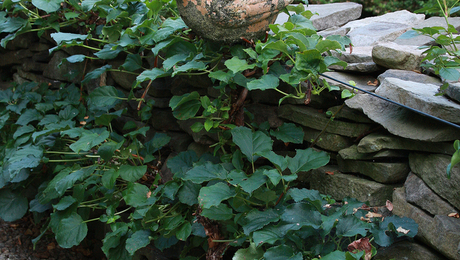
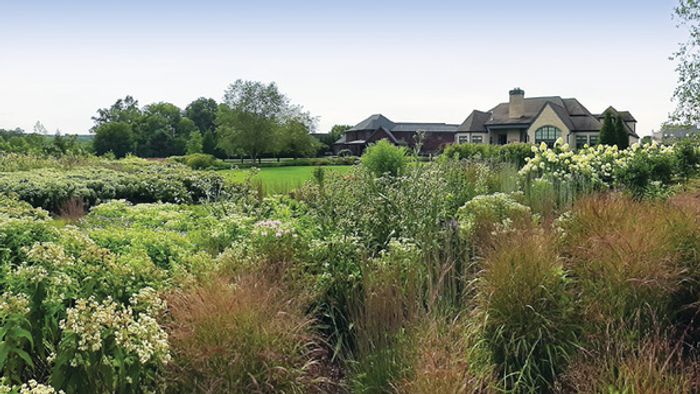

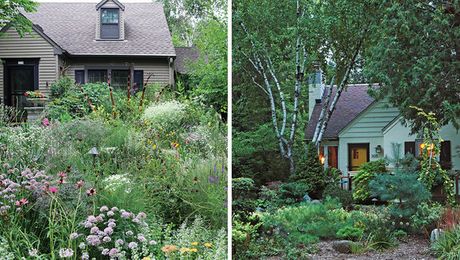









Comments
I am earning about 6000-8000 dollars a month from freelancing at home. For those of you who are willing to complete simple at home jobs for 2-5 h every day from your home and make valuable income while doing it... Then this gig is for you... http://ur1.ca/pm79v
gdfg45345
Log in or create an account to post a comment.
Sign up Log in